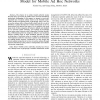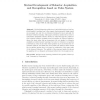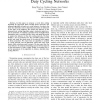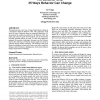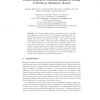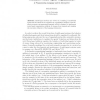VL
2008
IEEE
14 years 5 months ago
2008
IEEE
Designers are skilled at sketching and prototyping the look of interfaces, but to explore various behaviors (what the interface does in response to input) typically requires progr...
LCN
2008
IEEE
14 years 5 months ago
2008
IEEE
— The absence of an online trusted authority makes the issue of key revocation in mobile ad hoc networks (MANETs) particularly challenging. In this paper, we present a novel self...
IROS
2008
IEEE
14 years 5 months ago
2008
IEEE
Abstract. Both self-learning architecture (embedded structure) and explicit/implicit teaching from other agents (environmental design issue) are necessary not only for one behavior...
ICDCS
2008
IEEE
14 years 5 months ago
2008
IEEE
— In this paper, we propose a novel duty cycling algorithm for large-scale dense wireless sensor networks. The proposed algorithm is based on a social behavior of nodes in the se...
UM
2009
Springer
14 years 6 months ago
2009
Springer
Abstract. Recent sensor technologies have enabled the capture of users’ behavior data. Given the large amount of data currently available from sensor-equipped environments, it is...
PERSUASIVE
2009
Springer
14 years 6 months ago
2009
Springer
This paper presents a new way of categorizing behavior change in a framework called the Behavior Grid. This preliminary work shows 35 types of behavior along two categorical dimen...
PERSUASIVE
2009
Springer
14 years 6 months ago
2009
Springer
This paper presents a new model for understanding human behavior. In this model (FBM), behavior is a product of three factors: motivation, ability, and triggers, each of which has...
IVA
2009
Springer
14 years 6 months ago
2009
Springer
Abstract. The challenge of making a virtual world believable includes a requirement for AI entities which autonomously react to a dynamic environment. After the breakthroughs in be...
FMICS
2009
Springer
14 years 6 months ago
2009
Springer
Cell libraries often contain a simulation model in a system design language, such as Verilog. These languages usually involve nondeterminism, which in turn, poses a challenge to th...
ESAW
2009
Springer
14 years 6 months ago
2009
Springer
Multi-agent systems are viewed as consisting of individual agents whose behaviors are regulated by organization artifacts. This abstract presents a programming language, which is d...

